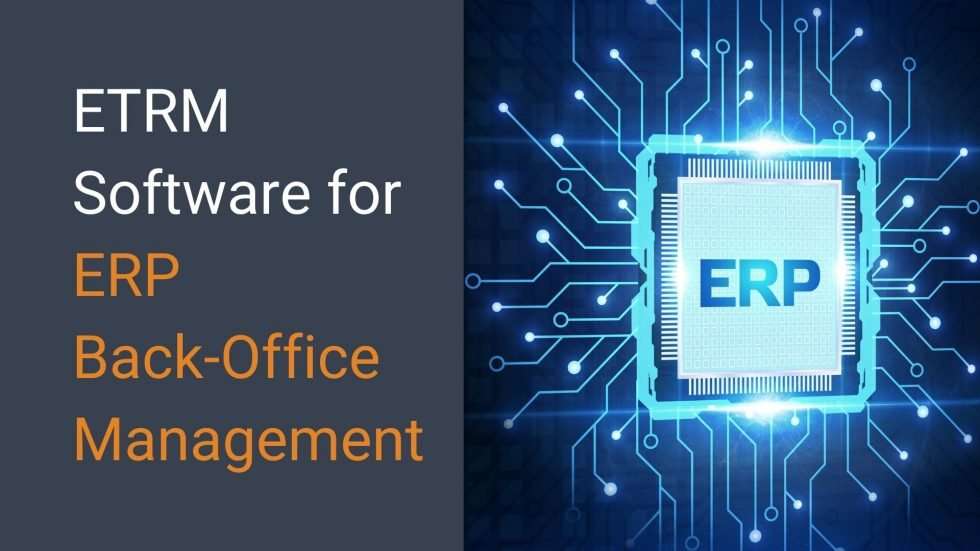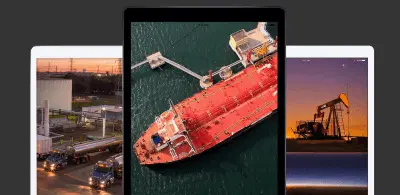The Benefits of Hedge Management Using ETRM Software
- May 19, 2022
- Posted by: Anand SEO
- Blogs

Undeniably, energy markets are volatile and complex. For managing the supply and trading of energy commodities, businesses require an industry-specialised energy trading and risk management (ETRM) system equipped with a powerful position and exposure reporting functionality. With tightening regulatory guidelines, a system that integrates solid financial controls and a record-to-report process can help you succeed.
This underlines the importance of adopting an ETRM solution that seamlessly integrates with an ERP back-office system, helping companies reduce and manage implementation risk, ensure better time-to-value, and optimise system ownership cost.
In this article, we will discuss the core differences between the ETRM and ERP and why the integration of these two systems is vital for your business.
What Is the Difference Between ETRM and ERP?
Although there are a lot of overlaps between ETRM and ERP systems, an ETRM is specifically designed to automate and streamline the day-to-day function of energy trading and risk management. Its modern architecture and APIs help carry out dedicated trading transactions and business processes and minimise risk. Moreover, it helps traders, risk managers, and marketers manage all the business’s critical functionalities, including logistics, trading, finance, management, and IT.
Here are the core differences between an ETRM and ERP.
-
Variations in pricing
Energy commodity prices are influenced by many external factors including currencies, exchanges, and so on. ERP systems cannot handle this volatility without extensive customisations which are still not failure-proof. In fact, an ERP cannot manage and reduce trading risks arising due to price variance. In contrast, an ETRM is specially designed to handle the price variance and volatility of the commodity market based on continually changing quality, trade volumes, date of delivery, and so on.
-
Hedging
Hedge trades have to abide by the International Financial Reporting Standards. An ERP is not equipped with core derivative functionalities and also has limited use in managing long and short positions and futures contracts. An ETRM on the other hand effectively handles standard reporting guidelines, manages hedge portfolios, provides accurate contract valuations, and much more.
-
Contracts
Energy trade contracts are more complex than fixed value physical contracts because of the market volatility, trading volumes, and other external factors. ERP cannot effectively handle such complicated contracts and is more suitable for contracts with fixed variables. An ETRM on the other hand efficiently manages these contracts based on the dynamics and volatility of the trading business.
-
Risk management
Risk management involves evaluating mark-to-market value, value at risk (VaR), hedge and position reporting, counterparty risk exposure, and much more. An ERP is more suited for commodities that involve fixed price, place, and date. In contrast, an ETRM is equipped with a comprehensive risk management functionality that provides complete control and visibility over your business to help you make profitable decisions.
Why ERP and ETRM Integration Is Needed?
Integrating ERP and ETM can ensure complete automation and streamlining of the front, mid, and back-office functionalities. Businesses often consider integrating these two systems under the following circumstances.
- Already have an ERP in place but need the powerful functionalities and flexibility of an ETRM system.
- Want to replace the mainframe or custom solution with a more commercial, proven off-the-shelf system.
- Aim to implement the best-of-class ETRM and ERP systems from different software providers.
- Want to migrate their systems to the cloud.
Mergers and acquisitions have led to too much heterogeneity in terms of applications and systems.
Challenges in Integration ETRM and ERP
The implementation challenges may arise due to the inherent differences between the two systems. This becomes more prominent in case there is an existing ERP system. Businesses may face the following challenges during the integration of the ETRM and ERP systems.
- Differences between the architecture and technology of the two systems including source, configuration, service-oriented architecture (SOA), development tools, and so on.
- Varying data models between the ETRM and ERP. For instance, for customers and business partners.
- Differences between calculation methodologies such as inventory value or cost of goods sold (COGS).
- Mismatch or interdependency between batch and real-time functionalities or processes including month-end closings.
- Differences in evaluations including rounding, precision, units of conversion, currency conversion, and so on.
How Inatech Can Help
Inatech offers the best-in-class integrated solutions for energy trading and risk management, effectively and completely handling front, mid, and back-office functionalities. Our solutions easily manage various functionalities using a modern, integrated workflow. This translates to seamless operations, reduced errors, and effective utilization of time and resources!
Moreover, our solutions are truly ERP agnostic—even if you want to retain your current ERP, it can integrate with any system available on the market.
To know more about how Techoil can seamlessly integrate into your business, visit Techoil


